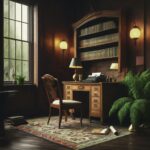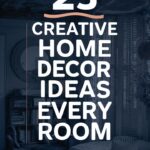Are you considering pool removal and wondering about the costs, methods, and finding the right contractor? Look no further.
In this comprehensive guide, we’ll provide you with all the information you need to make an informed decision about removing your pool.
From weighing the pros and cons to understanding the different removal methods, permits, and hiring the right contractor, we’ve got you covered.

Pros & Cons of Removing a Pool
Benefits of Pool Removal
- Cost Savings: By removing your pool, you can save both time and money on swimming pool maintenance, allowing you to redirect these resources elsewhere.
- Property Value: If you’re planning to sell your house, removing the pool may increase the number of potential buyers and make your home easier to sell.
- Safety: Eliminate the hazards and liabilities associated with pool ownership, particularly important if you have young children.
- Yard Space: Gain more yard space for other activities or landscaping opportunities, enhancing the aesthetics and functionality of your property.
Cons of Removing a Pool
- Loss of Swimming Facility: If you love using your pool and plan to stay in your home for the long term, the upkeep cost might be justified.
- Preference-Based: The decision to remove a pool depends on your swimming habits and future plans, making it a matter of personal preference.
Inground Pool Removal Methods
Method 1: Filling in a Pool (Partial Removal)
How It’s Done: Filling in a pool involves draining it, punching holes in the bottom, demolishing the top layer (18′ – 36′), placing the rubble in the bottom, filling it with additional dirt and topsoil, and compacting the soil.
Pros of Pool Fill In:
- Affordability: This is the most cost-effective inground pool removal method.
- Speed: Typically completed in 2-3 days.
Cons of Pool Fill In:
- Property Disclosure: Future property buyers need to be informed, potentially affecting your home’s value.
- Risk of Issues: If not done correctly, there’s a risk of sinkage, swelling, or seepage.
- Buildable Area: Many cities may deem the former pool area non-buildable, limiting future construction options.
Learn more about the cost of filling in a pool and choosing the right inground pool removal method.
Method 2: Complete Pool Removal
How It’s Done: The pool is drained, and all materials, such as concrete, fiberglass, liner, re-bar, etc., are removed and hauled away. The area is then filled with soil and/or gravel and compacted.
Like Us on Facebook!
Pros of Complete Pool Removal:
Subscribe Us on YouTube!
- Minimal Impact on Property Value: Removing the pool should have little to no impact on your home’s value.
- Reduced Risk: With no buried concrete, the risk of sinkage and seepage is significantly reduced.
Cons of Complete Pool Removal:
- Non-Buildable Area: Many cities consider the former pool area non-buildable.
- Higher Cost: This method is more expensive than partial removal in most cases.
- Engineer Supervision: In some areas, you may need an engineer to oversee the filling process.
Find local inground swimming pool removal services near you to get started with your project.

Above Ground Pool Removal Methods
Removing an above ground pool is generally simpler than an inground pool removal, but it’s essential to follow the right steps:
How Above Ground Pool Removal Works
Step 1: Pool Is Drained: Use a pump to drain the pool, typically towards a sewer point within 100 feet of the pool.
Step 2: Pool Is Torn Down: Depending on the pool type, this involves unscrewing bolts, using a sledgehammer on the walls, and dismantling them.
Step 3: Pool Is Hauled Away: Rent a dumpster or hire a junk removal company to dispose of debris, considering recycling options.
Step 4: Repair the Pool Site: After removal, address the empty space, which may require reseeding grass or other landscaping.
Cost to Fill in a Pool
The cost of removing an inground pool varies, depending on factors like the pool type, size, accessibility, removal method, and the chosen contractor. Inground pool removal costs range from $3,500 to $15,000 for medium-sized pools with easy access.
For above ground pools, removal is generally more affordable, with costs averaging between $1,000 to $3,000. However, prices can vary widely based on specific factors.
Pool Removal Permits
In most cases, you’ll need a permit to fill in a pool, with costs ranging from free to several hundred dollars, depending on local regulations. Familiarize yourself with your local government’s rules on pool removal, which may include specific protocols.
Pool Demolition Contractors
Hiring a qualified pool removal contractor is crucial for a successful project. Obtain written estimates from at least three contractors in your area. Ensure the estimate covers project timelines, payment schedules, permits, equipment, property protection, and contact information.
When selecting a contractor, prioritize experience and insurance, especially for inground pool removals, which require careful planning and execution to avoid damage and future issues.
By considering the pros and cons, understanding the removal methods, estimating costs, obtaining permits, and selecting the right contractor, you’ll be well-prepared to tackle your pool removal project. Make an informed decision that suits your needs and enhances your property.

























